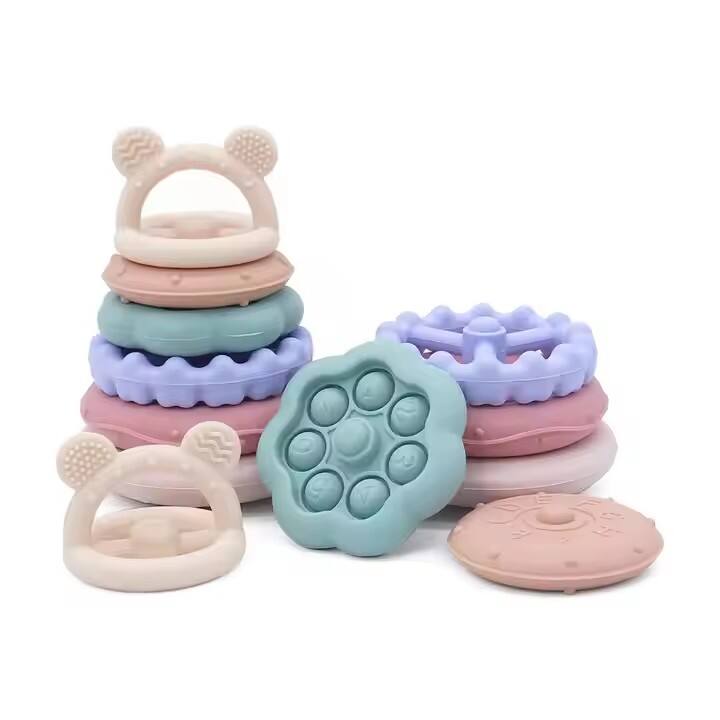Silicone Teething Toys: A Safe Solution for Your Baby
As a new parent or soon-to-be parent, the journey of raising your baby is both exciting and filled with challenges, particularly when you'll face developmental milestones like teething. One of the most effective ways to soothe your little one's discomfort during this time is through safe and reliable teething toys. In this article, we'll cover everything you'll need to know about silicone teething toys — from understanding teething to why silicone is a preferred choice for parents.
Understanding Teething and Its Challenges
What is Teething?
Teething, also known as odontiasis, refers to the process through which a child's primary teeth emerge from the gums. This milestone typically kicks off between 4-6 months of age and can continue until the child is about 3-4 years old. Unfortunately for babies, teething often brings discomfort, leading to irritability, drooling, and gum swelling.
Signs and Symptoms of Teething
Common signs that your baby might be teething include:
- Increased fussiness and irritability
- Constant drooling
- Swollen or sensitive gums
- Put everything in their mouth to chew
- Sleep disturbances
Why Babies Need Teething Toys
Teething toys are specifically designed to alleviate the discomfort associated with teething. Chewing on these toys helps massage the gums, providing relief. They are made from various materials, with silicone being a widely accepted choice for its safety and durability.
Why Choose Silicone Teething Toys?
The Benefits of Silicone
Silicone is non-toxic, flexible, and durable. This material withstands the challenging conditions associated with teething while providing a safe outlet for your baby to chew. Food-grade silicone, a common choice for teething toys, is free from harmful chemicals, making it the go-to option for most parents.
Safety of Silicone Teethers
One of the biggest concerns parents have is about the safety of teething toys. Silicone is generally safe if it is made from food-grade silicone, which assures that it does not contain BPA, phthalates, or PVC. The FDA has classified food-grade silicone as a safe material for children; it can withstand high temperatures, making sterilization easy and effective.
Different Shapes and Designs of Silicone Teethers
Silicone teething toys come in various shapes and designs that can capture your baby's attention. From rings and animals to customized shapes, there are numerous options available to cater to your baby's preferences. The textured surfaces on these toys encourage sensory development, offering an engaging experience while helping soothe sore gums.
Safety Considerations for Silicone Teething Toys
Identifying Non-Toxic Silicone
When purchasing a silicone teether, always look for products labeled as 100% food-grade silicone. Quality brands will provide transparency about their materials and manufacturing processes, ensuring you’re choosing a safe option for your baby.
Potential Hazards of Teething Toys
Be mindful of choking hazards when selecting a teething toy. Ensure that the product does not have small detachable parts that can break off easily. Opt for solid designs with no sharp edges to ensure safety during use.
Regulatory Standards for Baby Toys
Understanding safety standards is key to making informed purchases. Look for toys that comply with ASTM F963 (the American Society for Testing and Materials). This standard covers safety aspects of toys, including choking hazards and toxic materials.
How to Effectively Use Silicone Teething Toys
Proper Cleaning and Maintenance
Maintaining the hygiene of teething toys is crucial. Silicone teethers are typically dishwasher-safe; however, they can also be handwashed with warm, soapy water. Regular cleaning helps prevent the buildup of bacteria and maintains your baby's health.
Best Practices for Use
When using silicone teething toys, chill them in the refrigerator for added relief to sore gums. Just be cautious not to freeze them, as extreme cold may damage sensitive baby gums. It’s essential to supervise your baby while they play with their teether to ensure they use the toy safely and appropriately.
When to Introduce a Teether to Your Baby
The ideal time to introduce a teether is when your baby starts showing signs of teething — usually around 6 months of age. Observing signs like increased chewing and irritability can help you gauge when to start using a teething toy.
Exploring Popular Silicone Teething Toys
Top Brands and Products
As you shop for teething toys, consider some reputable brands that have received positive feedback from parents. Products made from food-grade silicone with diverse textures and shapes are particularly popular for their effectiveness and safety during the teething period.
Innovative Features in Modern Teethers
Contemporary silicone teethers often include features that cater to babies’ developmental needs, such as varying textures, built-in massagers, and designs that promote motor skill development. Some even integrate educational features to foster cognitive growth.
Comparing Silicone Teething Toys with Other Options
While silicone is a highly recommended material, there are other teething toy materials like rubber and wood. However, silicone teethers have the advantage of easy cleaning, versatility, and are generally free of toxins, making them a preferred choice among parents.
Conclusion
Silicone teething toys are indeed a safe and effective solution for alleviating your baby's discomfort during teething. With their numerous benefits, including safety, durability, and variety of shapes, they stand out as the go-to choice for parents. Ensure that you select high-quality, non-toxic silicone teethers, and maintain proper hygiene practices to support your baby's developmental journey seamlessly.

